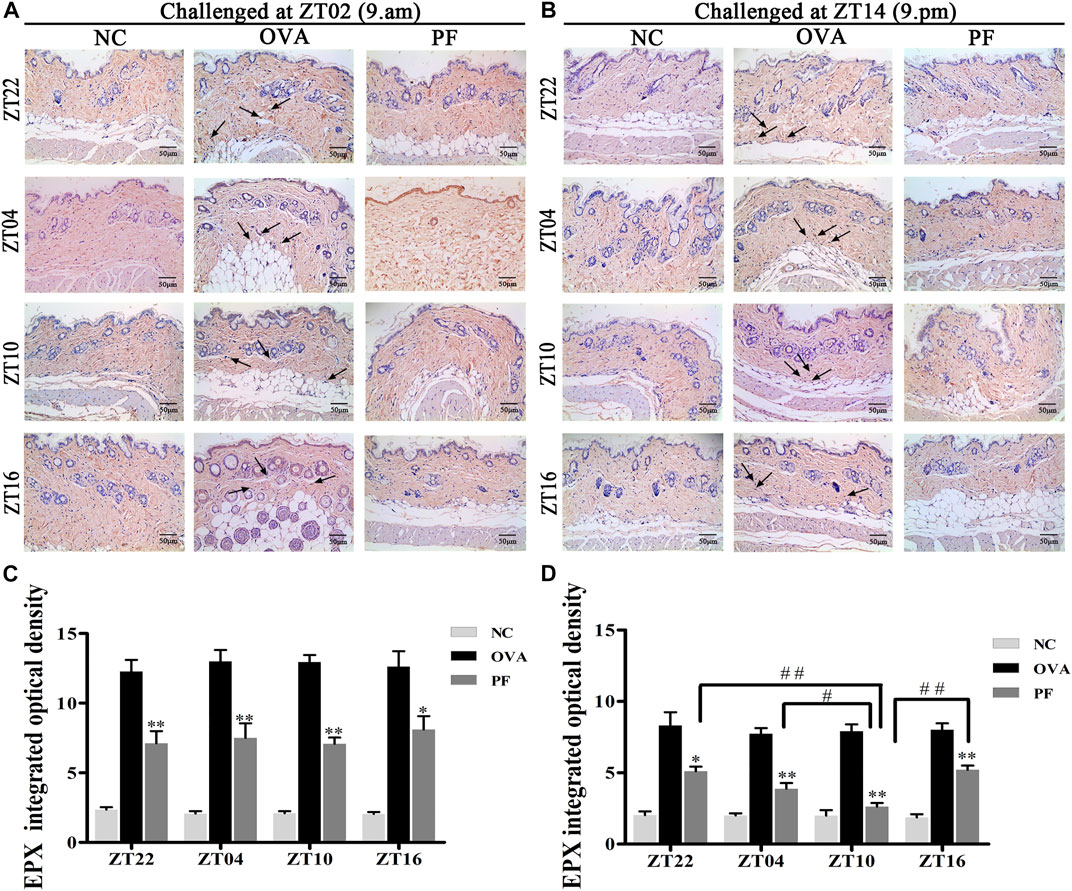
95% of researchers rate our articles as excellent or good
Learn more about the work of our research integrity team to safeguard the quality of each article we publish.
Find out more
CORRECTION article
Front. Pharmacol. , 19 May 2022
Sec. Ethnopharmacology
Volume 13 - 2022 | https://doi.org/10.3389/fphar.2022.918401
This article is a correction to:
Circadian Pharmacological Effects of Paeoniflorin on Mice With Urticaria-like Lesions
A Corrigendum on
Circadian Pharmacological Effects of Paeoniflorin on Mice With Urticaria-like Lesions
by Peng L, Wen L, Zhang J, Zhang X, Wei Q, Guo J and Zeng J (2022). Front. Pharmacol. 12:639580. doi: 10.3389/fphar.2021.639580
In the original article, there was a mistake in “Figure 6” as published. Due to the large number of images being processed, one of them was incorrectly processed and uploaded, resulting in its erroneous inclusion within Figure 6. What’s more, according to university and hospital new regulations, multiple funds cannot be written in one manuscript, so we retained the first 3 grants. The corrected Funding statement is “This work was supported by the National Natural Science Foundation of China (grant nos. 82074443 and 81873310), the Sichuan Provincial Central Government Leading Local Science and Technology Development Special Project (grant nos. 2021ZYD0089).” The corrected “Figure 6” appears below. After checking, we have found there was no problem with the statistical analysis.

FIGURE 6. Representative low-magnification light photomicrographs (A,B) and integrated optical density (C,D) displaying immunohistochemistry of eosinophil protein X (EPX) (black arrows). The PF treatment at ZT10 had a greater effect on EPX production. Data are expressed as mean ± SEM (n = 6). *p < 0.05, **p < 0.01 versus OVA mice at the same time points. #p < 0.05, ##p < 0.01 represents the comparison of PF ZT10 versus the other three PF groups. The magnification was ×200.
The authors apologize for this error and state that this does not change the scientific conclusions of the article in any way. The original article has been updated.
All claims expressed in this article are solely those of the authors and do not necessarily represent those of their affiliated organizations, or those of the publisher, the editors and the reviewers. Any product that may be evaluated in this article, or claim that may be made by its manufacturer, is not guaranteed or endorsed by the publisher.
Keywords: urticaria-like lesion, paeoniflorin, allergic response, inflammatory cell infiltration, inflammatory cytokine, chronotherapeutic
Citation: Peng L, Wen L, Zhang J, Zhang X, Wei Q, Guo J and Zeng J (2022) Corrigendum: Circadian Pharmacological Effects of Paeoniflorin on Mice With Urticaria-like Lesions. Front. Pharmacol. 13:918401. doi: 10.3389/fphar.2022.918401
Received: 12 April 2022; Accepted: 26 April 2022;
Published: 19 May 2022.
Edited and reviewed by:
Javier Echeverria, University of Santiago, ChileCopyright © 2022 Peng, Wen, Zhang, Zhang, Wei, Guo and Zeng. This is an open-access article distributed under the terms of the Creative Commons Attribution License (CC BY). The use, distribution or reproduction in other forums is permitted, provided the original author(s) and the copyright owner(s) are credited and that the original publication in this journal is cited, in accordance with accepted academic practice. No use, distribution or reproduction is permitted which does not comply with these terms.
*Correspondence: Jing Guo, Z3VvamluZzY2QGNkdXRjbS5lZHUuY24=; Jinhao Zeng, emVuZ2ppbmhhb0BjZHV0Y20uZWR1LmNu
†These authors have contributed equally to this work and share first authorship
Disclaimer: All claims expressed in this article are solely those of the authors and do not necessarily represent those of their affiliated organizations, or those of the publisher, the editors and the reviewers. Any product that may be evaluated in this article or claim that may be made by its manufacturer is not guaranteed or endorsed by the publisher.
Research integrity at Frontiers

Learn more about the work of our research integrity team to safeguard the quality of each article we publish.